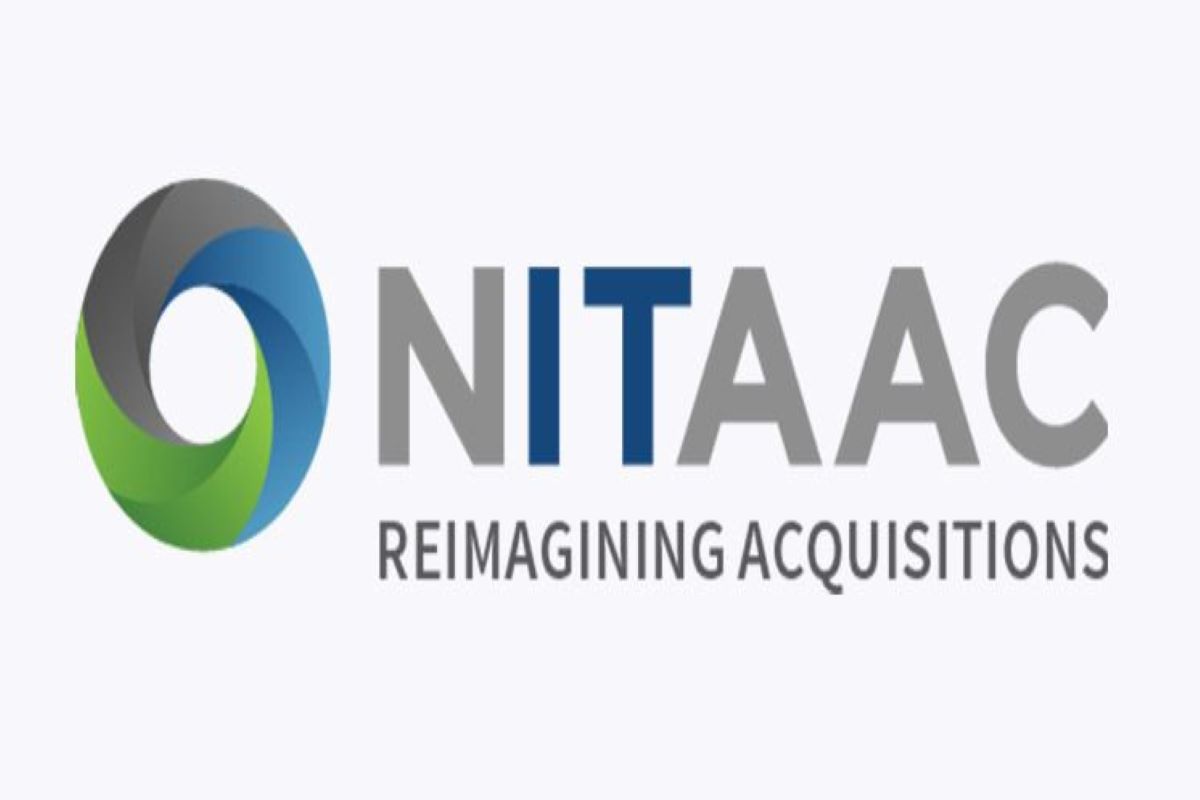NITAAC may want to borrow Mark Twain’s famous saying, “The reports of my death are greatly exaggerated.”
NASA’s SEWP program is inundated with bids for version six of its governmentwide acquisition contract.
The General Services Administration has some data issues with an oversight tool.
These are the latest among a host of story lines in the federal acquisition community. Welcome to another edition of As the Acquisition World Turns.
The National Institutes of Health’s IT Acquisition and Assessment Center hasn’t been shut down. It’s employees are still accepting and processing task orders, and making contract awards.

“There have been numerous rumors circulating about the potential closure of NITAAC. I want to take this opportunity to set the record straight: NITAAC remains fully operational and is committed to supporting all federal agencies in need of comprehensive IT solutions and services, particularly those with a focus on health care,” said Ricky Clark, NITAAC’s director, in an email to Federal News Network. “As a key player in the GWAC space, NITAAC stands out for its specialized support of health-related IT. We offer a full spectrum of services tailored to meet the unique needs of health care information technology environments —including medical software, hardware, networking, and cybersecurity services — ensuring agencies receive solutions that are both innovative and mission-ready.”
There are several reasons why the rumor mill heated up over the last month or so about the status of NITAAC.
The obvious one is President Donald Trump’s executive order in March that not only placed the General Services Administration at the center of buying all common products and services, but also take over the management and running of IT governmentwide acquisition contracts (GWACs). The EO gave the Office of Management and Budget 14 days to issue a memo to initiate this change and 30 days to give GSA the full authority. Both deadlines have passed without any new public
Currently, GSA, NASA and the NITAAC run these governmentwide contracts with approval from the Office of Federal Procurement Policy.
Under the terms of the EO, GSA will decide whether NASA and NITAAC will continue to run SEWP and CIO-SP, CS and other programs.
“The [GSA] administrator, in consultation with the director of OMB, shall defer or decline the executive agent designation for governmentwide acquisition contracts for information technology when necessary to ensure continuity of service or as otherwise appropriate,” the EO states. “The administrator shall further, on an ongoing basis and consistent with applicable law, rationalize governmentwide indefinite delivery contract vehicles for information technology for agencies across the government, including as part of identifying and eliminating contract duplication, redundancy and other inefficiencies.”
An email to OMB seeking an update on the two memos was not immediately returned.
Around the same time as the executive order, NITAAC’s website went down, which spurred even more rumors.
Clark said the contract supporting the website took longer than anticipated to be renewed. He said that issue has been resolved, and the website should be back up in the coming days.
Finally, the third reason for the rumor mill is the layoffs that were happening across the federal government, including NIH. In early April, the Department of Health and Human Services initiated large scale cuts across the department, including at NIH, which saw at least four directors of the its 27 institutes and centers put on administrative leave, and nearly entire communications staffs were terminated.
Clark said none of NITAAC’s federal employees were impacted, though they did have to descope some of their support contracts.
The future of NITAAC remains unclear.
Clark said the organization remains in discussions with GSA and OMB.
“Looking ahead, we remain focused on the future — one that is aligned with the OMB and GSA directive to eliminate redundancy and inefficiencies across government operations,” he said. “NITAAC is committed to delivering streamlined, cost-effective, and scalable IT acquisition solutions that not only support federal health initiatives but also uphold the principles of smart government spending and operational excellence.”
In the meantime, Clark said NITAAC extended the CIO-SP3 contract for another year through April 29, 2026. He said there is no movement on the CIO-SP4 follow up vehicle.
SEWP V extended
The other GWAC at the center of this consolidation discussion, NASA SEWP, saw industry come to its defense.
More than two dozen SEWP contract holders wrote to DOGE last week explaining why the 32-year-old contract vehicle should continue and is a model for government efficiency.
“SEWP doesn’t cost the government any money. They would not be saving money by destroying it,” said Gayle Troan, the vice president of programs at Federal Resources Corp., which provides cybersecurity and professional services and is a SEWP V contract holder. “SEWP is funded by the 0.34% fee, so they already are a cost-effective vehicle. In the 1970s, there’s a saying that was popularized by OMB under President Jimmy Carter: ‘If it ain’t broke, don’t fix it.’ That really applies here. We would love for OMB and DOGE to understand that SEWP isn’t broken, and they shouldn’t try to fix it.”
The letter, signed by 26 companies, explains how the GWAC promotes competition, supports small businesses and how it’s structured to encourage transparency and contractor engagement.
“SEWP is also designed to adapt to emerging technologies and mission needs. With flexible contract line-item structures and rapid technical refresh capabilities, SEWP is already enabling the acquisition of next-generation tools like artificial intelligence, cloud-native platforms, and quantum-resilient systems. This ensures that agencies can stay ahead of the curve and maintain mission readiness in a rapidly evolving threat landscape,” the letter states. “When evaluating the federal government’s IT procurement vehicles, it is evident that NASA SEWP stands far ahead in terms of both operational efficiency and mission responsiveness. Metrics show that SEWP processes 362 orders per staff member — compared to just 40 for NITAAC and 31 for GSA — making SEWP roughly 10x more efficient in processing orders than its closest alternatives. When isolating civil servant staff, this efficiency advantage becomes even more pronounced.”
Troan said SEWP provides more than dollars and cents benefits, but agencies and industry alike benefit from its real-time reporting structure.
“If agency leadership wants to find out what they bought yesterday, last month or last year, they find that out including who delivered it, when it was delivered and at what cost down to the SKU level,” she said. “Another huge thing that NASA does that no other contract does is immediately make products available because it refreshes constantly. On average, it takes less than an hour to get something added to your contract, and they are doing all the background reviews and looking at where it’s priced on the contract so doing all comparison that the price reasonableness is there.”
Prince Anand, the chief operating officer and executive vice president at Regan Technologies Corp., a small business SEWP contract holder providing IT services, said the impact of moving the GWAC to GSA would especially be felt in a negative way by small firms.
“GSA requires a letter of supply from original equipment manufacturers (OEMs) and those are given to only a handful of companies. SEWP is just asking you to be an authorized reseller, which requires a much more generic letter. That is why the competition on SEWP is far greater because there are many authorized resellers versus maybe only a handful of OEMs,” he said.
In the letter, the companies also encourage DOGE to get GSA to eliminate the letter of supply requirement as it adds “unnecessary administrative burden, decreases procurement efficiency and restricts competition across the board.”
As for SEWP VI, it’s currently reviewing proposals and has extended SEWP V through Oct. 31 and included two three-month options. SEWP V was set to expire April 30.
Robert Turner, founder and CEO of rTurner Consulting, which helps vendors develop proposals, said he estimates SEWP may have received upwards of 4,000 bids for the sixth version of the GWAC.
“It took them nine months to finish the solicitation period, and we are going to believe they will evaluate, award and onboard vendors by October? I don’t think that’s going to happen,” Turner said. “Given Trump’s EO, I think the bigger question is why does GSA need SEWP VI? We know why industry likes it and invested millions of dollars bidding on SEWP VI, but why does GSA need it? It wasn’t a GSA standard RFP following OASIS+ or Polaris. Is GSA going to absorb SEWP VI? Does GSA even want it? I’m not sure there is even a good answer for that. I think a lot of us are waiting for DOGE, the administration and GSA to decide how it all plays out.”
Turner said industry likes SEWP for many reasons based on the increase in sales the vehicle has seen over the last decade, topping more than $12 billion in fiscal 2024.
GSA pauses oversight program
A quick update on GSA’s No Order Left Behind (NOLB), which is for the Global Supplies Schedule program and GSA Advantage, to improve order processing, administration and delivery via enhanced information sharing and collaboration with our industry partners.
Kicked off in November 2021, GSA developed a scorecard to alert vendors of all orders requiring action around shipment status or cancellations or on-time deliveries.
GSA told vendors that the scorecard for April will be delayed because of data issues.
“Until we can rectify the data issue, the NOLB and scoreboard email have been paused,” GSA wrote in an Interact post on April 21. “We will correct the issue and restart these emails very soon.”
Copyright
© 2025 Federal News Network. All rights reserved. This website is not intended for users located within the European Economic Area.
